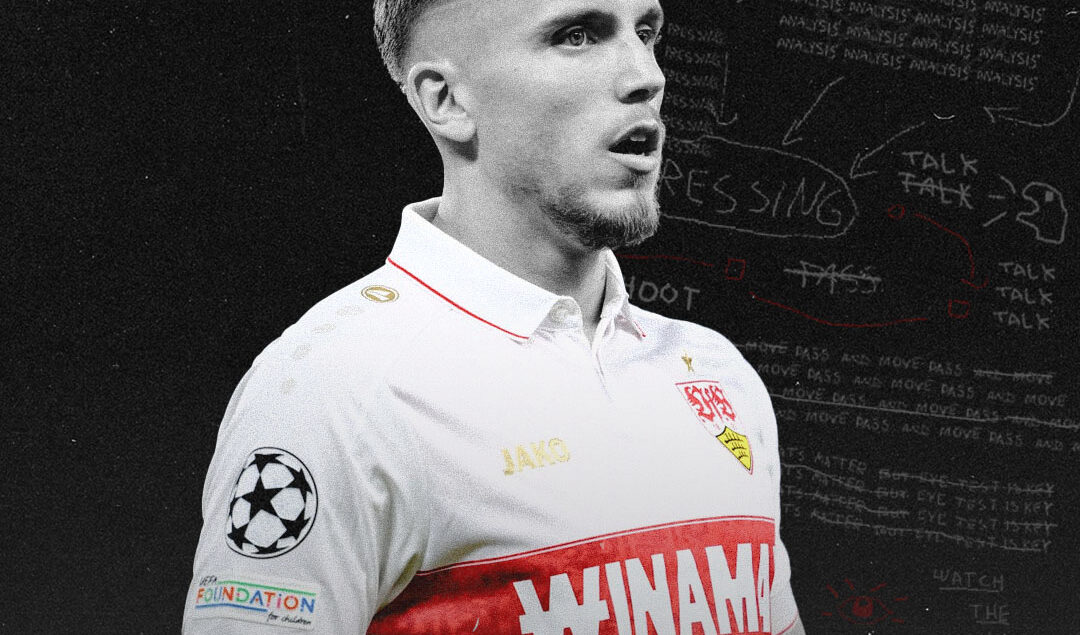Replacing a 28-Goal Striker: Why Ermedin Demirović Perfectly Fits Stuttgart’s System
It has been a fairly underwhelming start to the 2024/25 season for VfB Stuttgart, who sit 10th in the Bundesliga table with nine points from seven matches, and who currently find themselves in 18th place in the 36-team UEFA Champions League table. This dip in form was somewhat expected, however, after a summer exodus which saw various key players like Serhou Guirassy and Waldemar Anton (Borussia Dortmund) and Hiroki Itō (Bayern Munich) join domestic rivals.
Speaking of Guirassy, who played a crucial role in Stuttgart’s second-place finish last season by netting 28 league goals, Stuttgart manager Sebastian Hoeneß has already moved to fill the void left by the Guinean striker. His answer? The arrival of 25-year-old Bosnian forward Ermedin Demirović, who has become Stuttgart’s second-most expensive signing, just behind fellow summer arrival Deniz Undav.
This begs the question: was spending €21 million (potentially rising to €26 million) on the former Augsburg striker the right move for “the Reds”? In this piece, we’ll break down Guirassy’s role and Hoeneß’s tactics, analyze Demirović’s profile, and assess whether the Bosnian can effectively fill the void left in Stuttgart’s attack.
A Void to Fill: Understanding Guirassy’s Role in Stuttgart’s Attack
To determine whether Demirović is a suitable replacement for Guirassy, we first need to understand how the Guinean striker operated within Stuttgart’s system last season before diving into the Bosnian’s abilities.
Whether it was the 4-2-3-1, 4-4-2, or 3-4-3 formation, Serhou Guirassy was the leading man deployed to spearhead the attacking line. He had the task of occupying the opposition’s center halves and making runs into the channels. However, the 28-goal forward wasn’t just a static presence.
Serhou Guirassy: The Guinean Striker Hitting Record Heights at Stuttgart
In addition, the Guinean striker also often dropped into deeper areas, particularly the left half-space, where he would pull defenders out of position, creating openings for teammates and also help with maintaining the ball and circulating possession.
One of the primary beneficiaries of this movement was Deniz Undav, who capitalized on the space Guirassy created. Undav’s ability to exploit these gaps led to an impressive return of 18 league goals during his loan spell, which earned him a permanent move this summer, making him the club’s record signing.
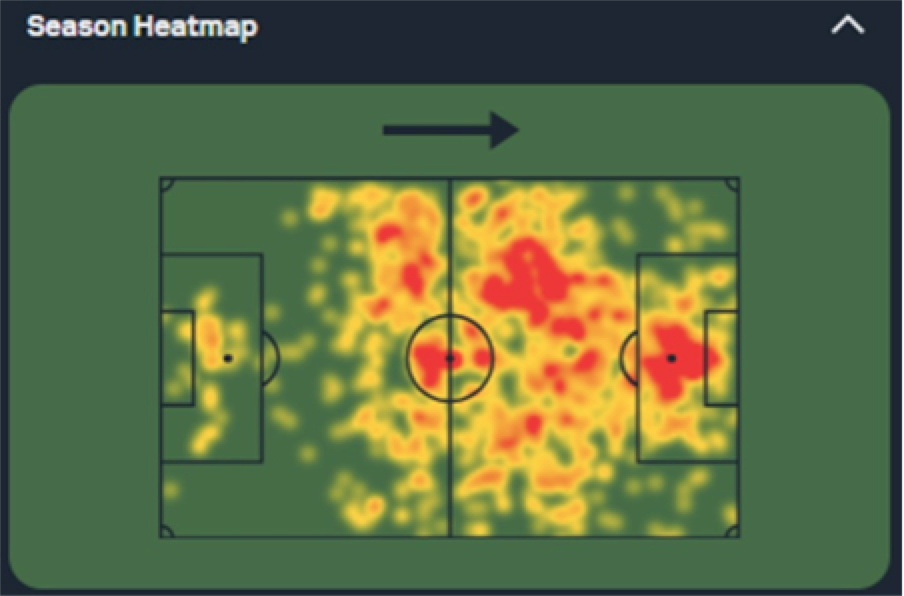
Photo: Sofascore
Focusing again on Guirassy, the 28-year-old striker’s ability with the ball in deeper areas was vital for Hoeneß’s side. Despite recording just two league assists, his creativity in the final third was undeniable. He finished the season with 53 key passes, ranking 12th in the Bundesliga—not just among strikers but across all positions.
It’s clear that Stuttgart’s fluid system in possession allowed Guirassy to fully showcase his strengths. Hoeneß’s team finished the season third in possession and fourth for positional attacks, which played to Guirassy’s advantage.
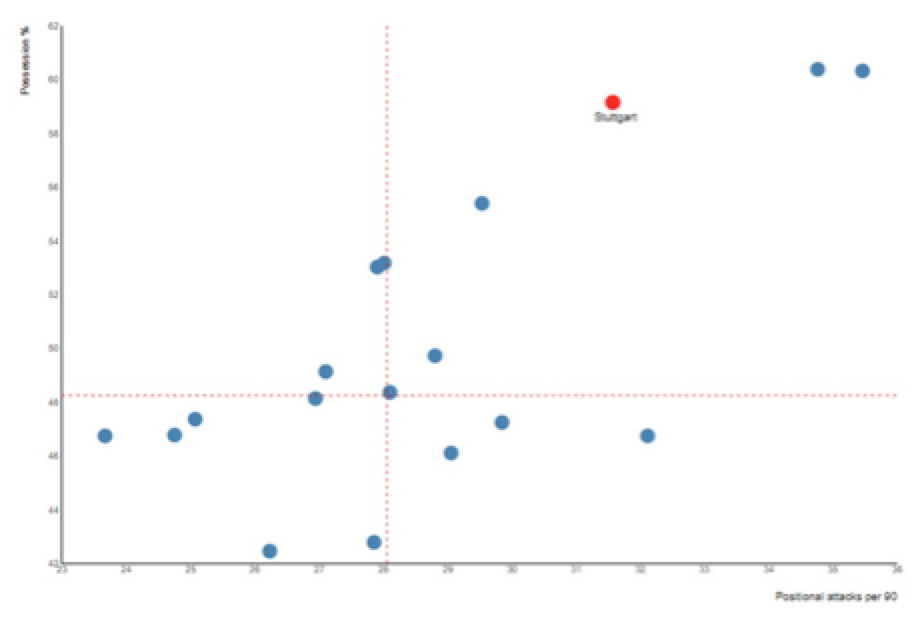
Photo: DataMB
With his tendency to drop deep, Guirassy linked up with teammates and kept the ball circulating, all while creating a numerical advantage in the middle third, making him an essential part of Stuttgart’s attacking build-up.
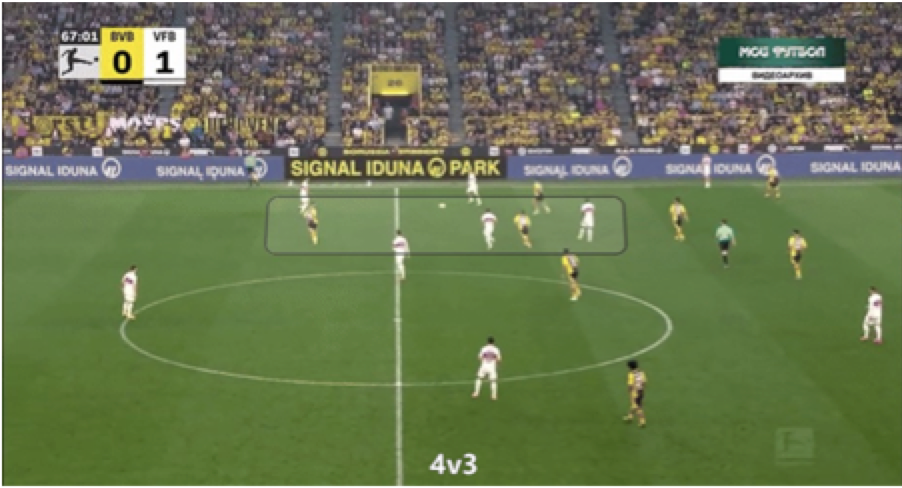
This is exactly how Guirassy often created space for Deniz Undav, but also for himself as he quickly sprints back into position after dragging the opposition’s center back out of place.
Going back to Stuttgart’s style of play, the “Reds” were not just limited to positional play. They finished last season ranked third in the league for direct attacks, with 76, trailing only Bayer Leverkusen (77) and Bayern Munich (78).
In these situations, Guirassy played a pivotal role as the team’s primary target when they opted to bait and bypass the opposition press. Thanks to his aerial ability, he excelled in this role, providing a reliable outlet to help Stuttgart transition quickly and effectively up the pitch.
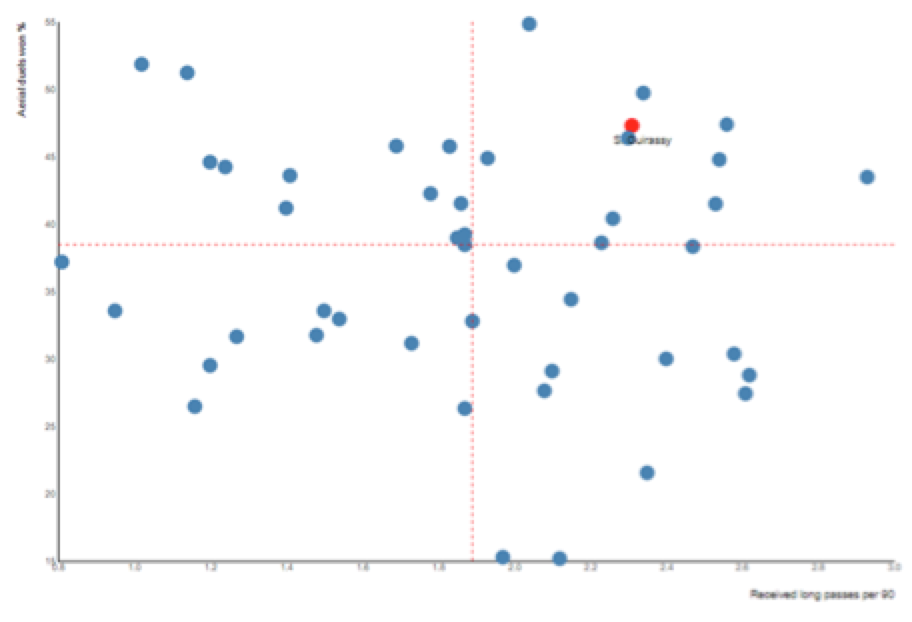
Photo: DataMB
As mentioned earlier, one of the most fascinating aspects of Hoeneß’s team was their ever-changing style of play. By employing different formations and patterns, the German manager’s fluidity in possession made Stuttgart one of the most unpredictable sides in the Bundesliga.
To successfully implement this approach, Hoeneß relied on versatile players who could thrive in multiple roles—players like Hiroki Ito, Maximilian Mittelstädt, Enzo Millot, and, of course, Serhou Guirassy.
In addition to Guirassy’s box presence and effectiveness as a “traditional” striker, his ability to make runs in behind, drift into the channels, drop deep to link up play, and hold possession was a crucial asset for Stuttgart. These attributes made the team more adaptable, allowing them to switch between maintaining possession and being more direct, depending on the flow of the game and their opponents’ approach.
This is why replacing the Guinea international with the correct profile was crucial for Hoeneß to maintain this fluidity.
Filling the Void: How Demirović’s Profile Matches Guirassy’s Influence in Stuttgart’s System
Before discussing tactics or player attributes, one crucial difference between the two players needs to be highlighted: availability. According to Transfermarkt, 28-year-old Serhou Guirassy has missed 69 games due to various injuries since the 2016-17 season, 15 of which were during his time at Stuttgart.
The Guinea international also missed Borussia Dortmund’s opening two league matches this season due to a knee injury—an issue that almost jeopardized his €17.5 million transfer. On the other hand, Ermedin Demirović’s availability has been remarkably consistent.
According to the same source, the Bosnian has only missed two games in his entire career, and those were for his national team back in 2023. Last season, Demirović logged the most minutes among all Bundesliga strikers, starting in all 33 appearances (in contrast, Guirassy started 25 of his 28 games).
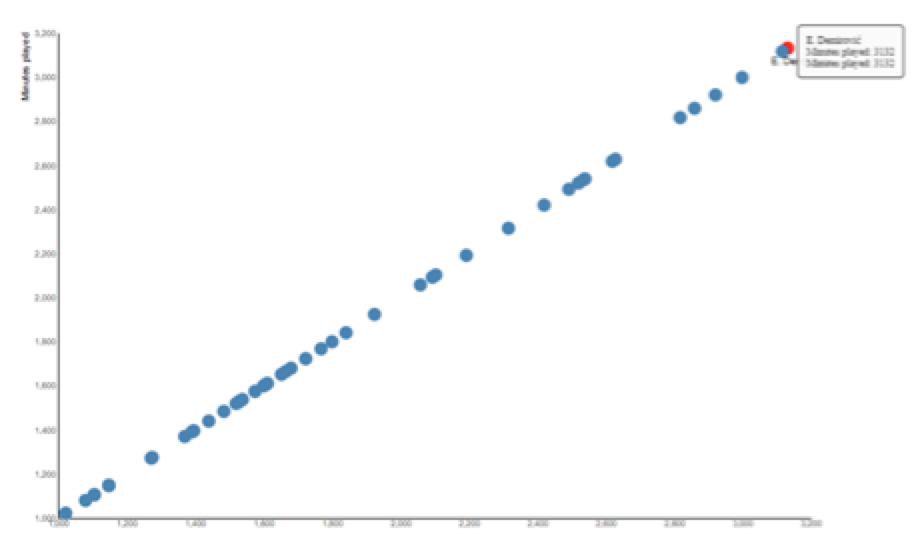
Photo: DataMB
While injuries are always unpredictable and impossible to prevent, in signing Demirović, Stuttgart has secured a player who is physically reliable and almost always available. With the club now competing in the Champions League, this durability will be vital as they aim to replicate the successes of last season.
Moving on to what the player brings to the table, it’s safe to say that Demirović still demonstrated qualities that make him a strong candidate to fill the void left by Serhou Guirassy despite playing for a less flexible and more direct team at FC Augsburg.
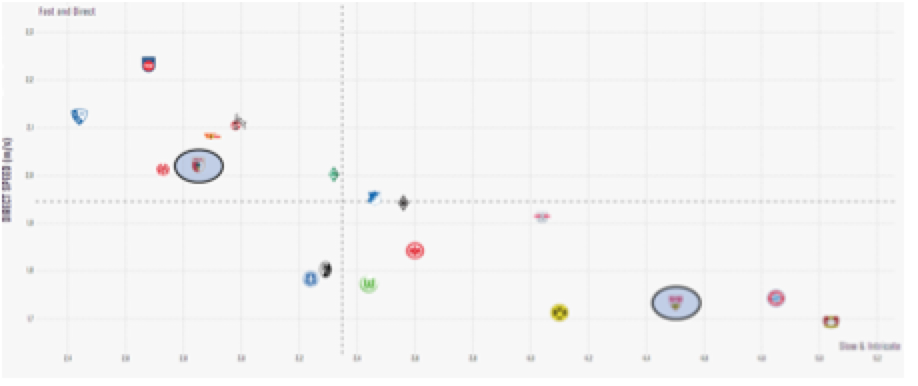
Photo: Opta
The Bosnian is versatile enough to play several positions, whether it’s leading the line as a number nine, dropping deeper as a number ten or second striker, or even operating from the left wing. This positional flexibility is reflected in his heat map from last season, where his movement covered various areas of the pitch, showcasing his ability to adapt and contribute in multiple roles.
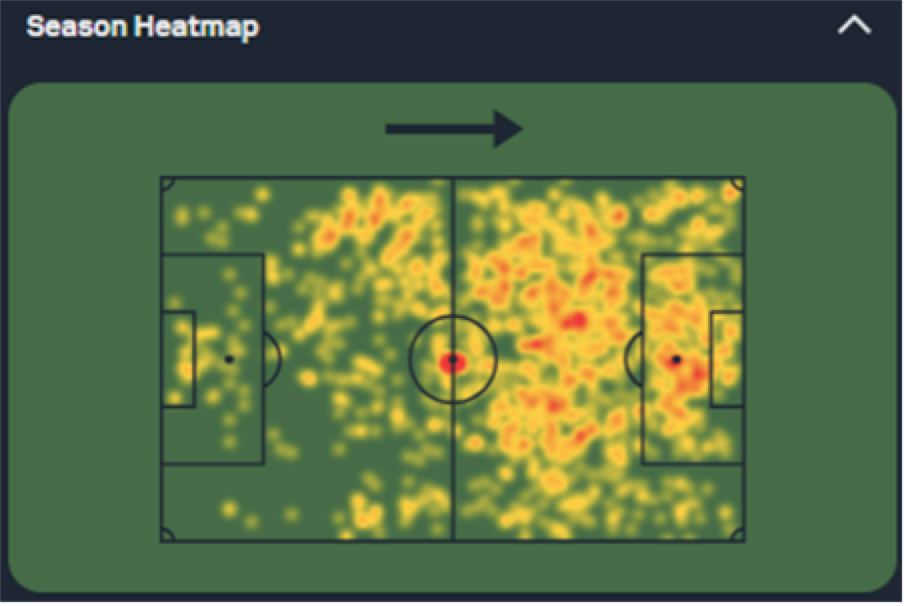
Photo: Sofascore
Aside from his versatility, one of the key similarities between Demirović and Guirassy, which made the Bosnian a top target for Sebastien Hoeneß, is his ability to drop deep from the striker position. By doing so at Augsburg, he created space for players like Ruben Vargas to exploit, much like how Guirassy’s movement benefitted his teammates at Stuttgart.
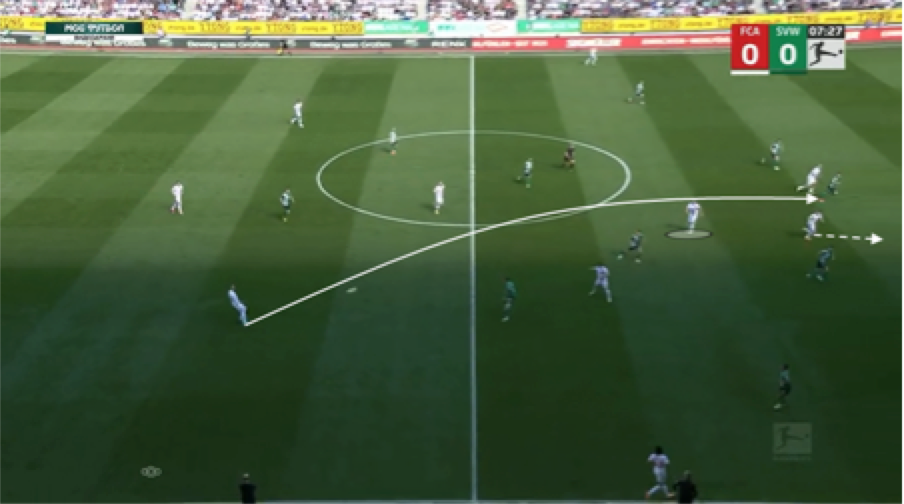
Demirović dropping deep to enable Vargas’ run
Demirović also frequently dropped even deeper into wide areas to help maintain possession, using his physicality, link-up play, and ability to turn and deliver through balls into the final third. In fact, his stats for accurate passes into the final third and penalty area were quite comparable to Serhou Guirassy, who excelled at facilitating play and linking up with Deniz Undav.
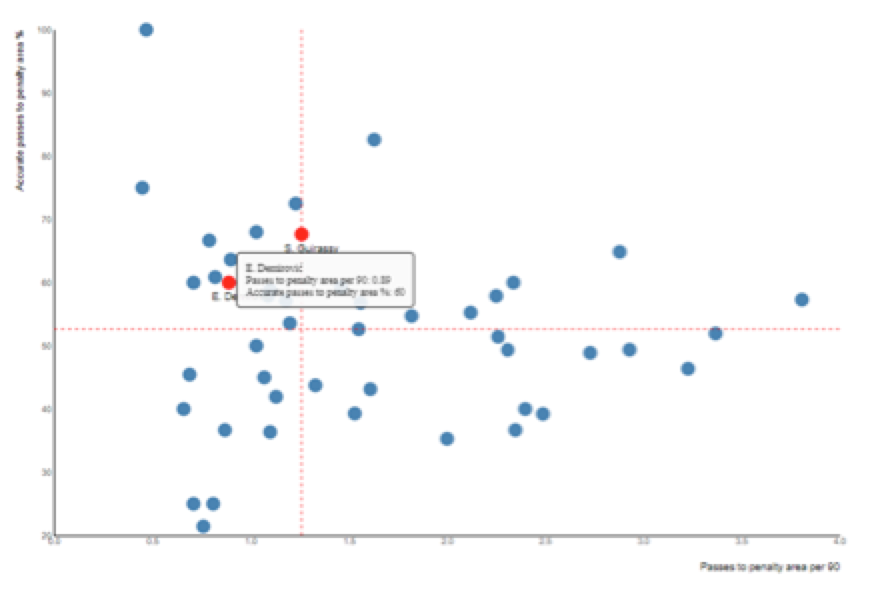
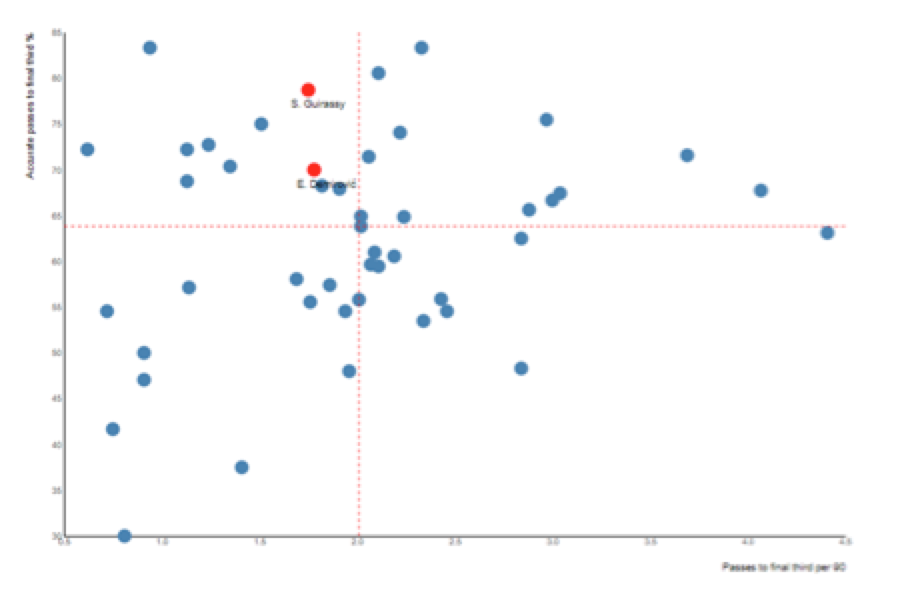
Photo: DataMB
These traits we’ve discussed can be invaluable for Stuttgart when they need to maintain possession and progress the ball patiently through the phases. Demirović’s ability to replicate Guirassy’s role makes it clear why he was chosen as his replacement. But his skill set doesn’t stop there!
Like the Guinean, Demirović can also excel when Stuttgart needs to adopt a more vertical approach. His intelligent movement and impressive pace allow him to run the channels effectively. He often starts his runs from the defender’s blind side, and once he gets hold of the ball, he uses his body well to shield it, making him a reliable outlet in quick transitions.
During his Augsburg days, Demirović used his explosiveness and physical presence to occupy more than one defender, which allowed his team to target Phillip Tietz, who often operated as the second striker alongside the Bosnian.
Overall, Demirović shares a profile that is very similar to Guirassy’s. While he scored 13 fewer goals last season than the latter, this gap can largely be attributed to Guirassy’s remarkable xG overperformance, having netted 28 goals from an expected 20.84 xG. In comparison, Demirović was more in line with his expected output, scoring 15 goals from 13.59 xG.
That said, the Bosnian has a natural instinct for finding the back of the net. He consistently positions himself in dangerous areas and uses his explosiveness to get ahead of defenders and on the end of crosses. His ability to change the direction of his runs makes him a constant threat, ensuring he’s often in the right place at the right time to finish off chances.
For a lanky 1.85m striker, Demirović possesses surprisingly quick feet, which enable him to manipulate the ball in tight spaces and create enough separation to get a shot off. This agility makes him a tricky opponent in one-on-one situations. However, the downside to this is that he can occasionally get ahead of himself, especially when operating from the left wing, as he chooses to dribble through crowded areas rather than making the more straightforward decision to lay the ball off to a teammate.
While Guirassy may have the edge in terms of finishing, especially given the lethal form he displayed last season, Demirović makes up for it with his tireless work rate and relentless pressing. The Bosnia international covered 341.6 km last campaign (13th among all Bundesliga players), compared to Guirassy’s 247 km. Additionally, Demirović’s defensive duels and interceptions per 90 minutes are significantly higher than those of the Guinean striker.
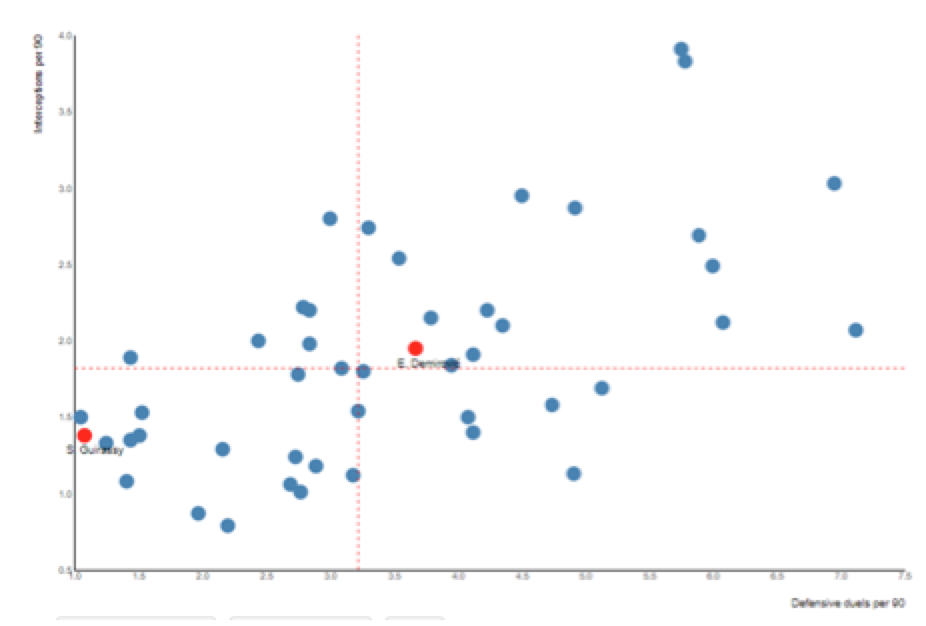
Photo: DataMB
It’s safe to say that Demirović is an intelligent presser, consistently curving his runs to force opponents into one side of the pitch, limiting their passing options. He applies this pressure with great intensity, aiming to either force a long ball or create a high-turnover situation in dangerous areas. This combination of tactical awareness and aggressive pressing makes him a key asset in disrupting opposition build-up play and regaining possession high up the pitch.
Void Filled? How Demirović Is Already Proving His Worth
So far this season, Demirović has started in four of Stuttgart’s six matches, scoring five goals from 2.42 xG. Impressively, he currently ranks first among Bundesliga forwards for both shots-on-target percentage and conversion rate. This could be seen as encouraging given the reduction in his playing time—from 87 minutes per game at Augsburg to 58 at Stuttgart — along with the shift in the system he is used to and the added pressure Stuttgart faces this season, with the loss of several key players.
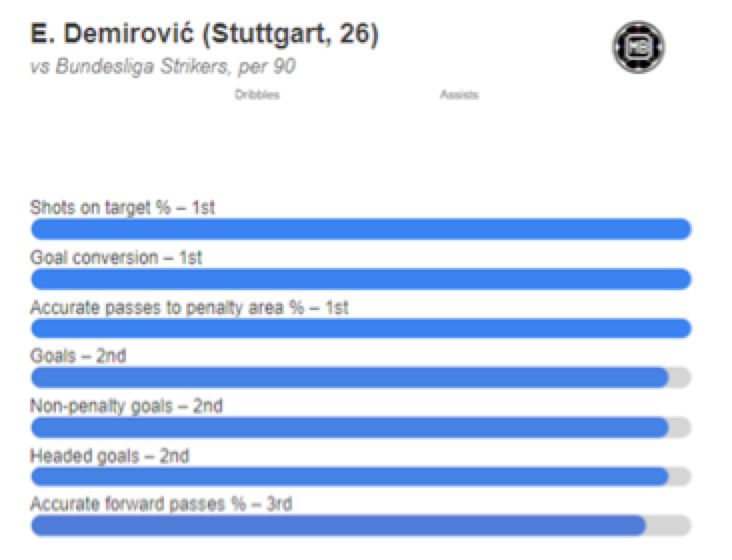
Photo: DataMB
Sebastian Hoeneß is using Demirović effectively while still having that unpredictability in possession. When Stuttgart opts for a patient build-up from the back, Demirović’s ability to drop deep, link up play, and slip teammates into dangerous positions has been evident. This is reflected in his increased passes received and a notable improvement in his expected assists compared to last season.
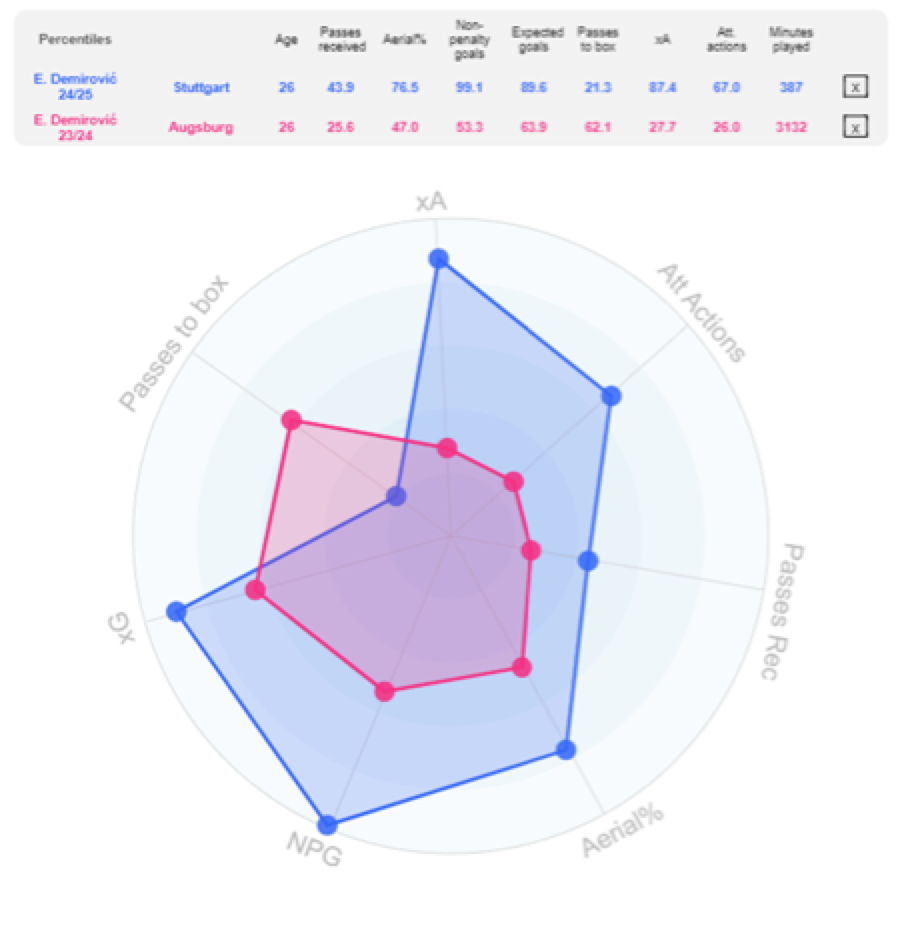
Additionally, just as Deniz Undav thrived last season with Guirassy occupying defenders and creating space for him, the 28-year-old is benefiting from Demirović’s movement and physical presence this season as well, having already scored five goals across all competitions.
When Stuttgart switches to a more direct approach, Demirović has proven to be an excellent outlet, making well-timed runs in behind and into the channels. This nearly resulted in a goal on his debut against Leverkusen in the German SuperCup. His off-the-ball movement has been a valuable asset, giving Stuttgart a more dynamic attacking option when they need to bypass midfield and go long.
As always, his relentless work out of possession is hard to miss. Demirović currently ranks third among Bundesliga strikers for tackles, averaging 0.47 per game.
Conclusion
Whether the Bosnian will be able to replicate the club’s successes of last season is yet to be seen. However, it’s safe to say that Stuttgart’s recruitment team, in collaboration with Sebastian Hoeneß, has done an excellent job in identifying Ermedin Demirović as the ideal successor to Serhou Guirassy.
It’s already evident that the 25-year-old forward essentially offers everything Guirassy did, from his link-up play and runs in behind to being a constant goal threat. While the Guinean may have had the upper hand in terms of aerial ability last season, Demirović appears to have worked on this aspect of his game, already scoring three-headed goals across all competitions this campaign.
Additionally, Demirović brings a much-needed intensity out of possession, making him a well-rounded and valuable asset for Stuttgart with and without the ball. With 5 goals in 7 Bundesliga performances, the signs are promising for Demirović as he looks to fill the lofty footsteps of Guirassy and cement his status as Stuttgart’s attacking protagonist.
By: Mohamed Fathalli / @FathalliMohamed
Featured Image: @GabFoligno / picture alliance
